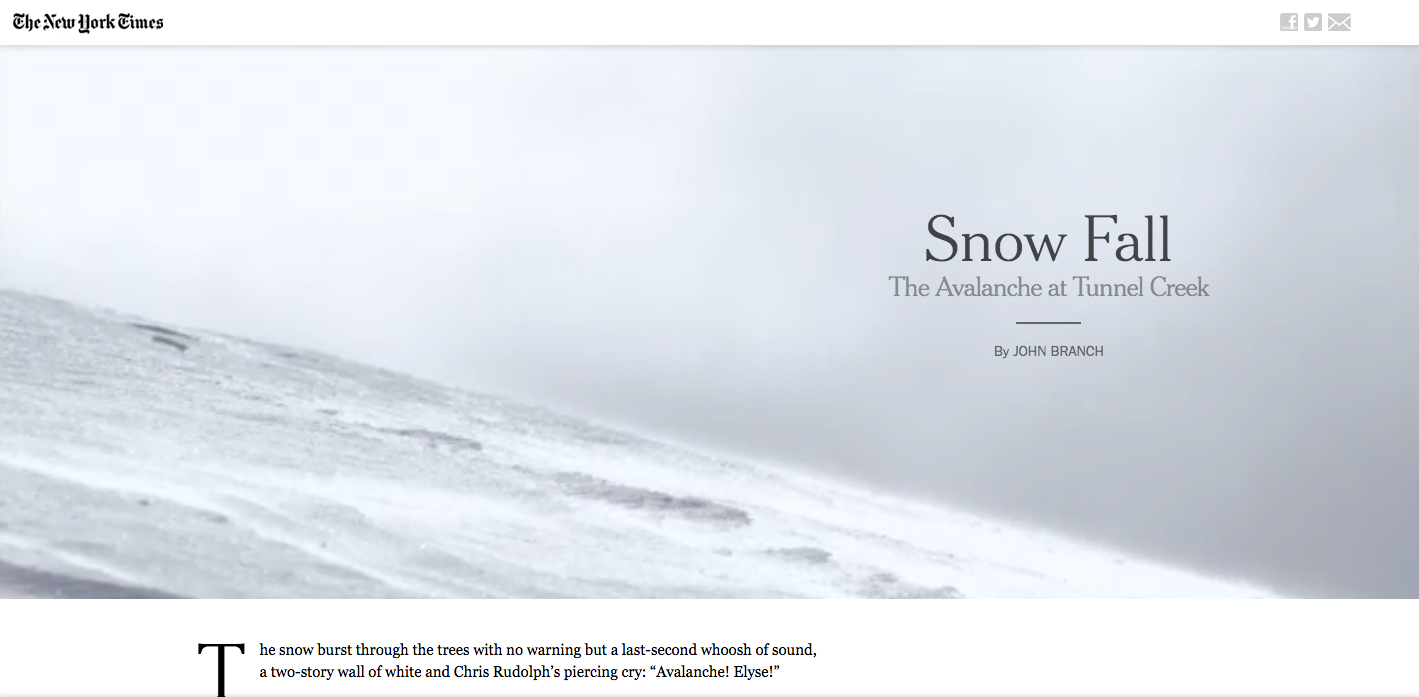Welcome to my page about narrative non-fiction, sometimes called literary journalism or storytelling journalism.
Here I want to inspire and share about this type of writing that gives readers the experience of fiction combined with the power of non-fiction.
Definition
Narrative non-fiction writing tells a true story that makes the reader feel he or she is reading fiction. By using reconstructed scenes, dialogue and other literary devices, this reported work moves fast, compels and is particularly powerful because it’s a true story.
Book-length examples with excellent reconstructions of scenes include:
- Sebastian Junger’s The Perfect Storm (the drowning scene)
- Jon Krakauer’s Under the Banner of Heaven (the murder scene)
- Andrew Ross Sorkin’s Too Big to Fail (inside the critical meetings of the financial crisis)
Article: A look back at narrative non-fiction
Narrative non-fiction travels under many names. Some call it literary non-fiction, narrative journalism, creative non-fiction or dramatic non-fiction. No matter what the alias, a work of literary journalism is distinct from a standard feature article.
Stories that qualify as literary journalism usually result from immersion reporting. A writer applies literary techniques – such as scene setting, plot, dialogue and characterization – to tell the story she has reported.
Often, stories focus on human nature and the events of daily life, and they read like a work of fiction. The works may come as books, magazine stories or newspaper articles.
Mark Kramer, the co-editor of an anthology of literary journalism, has said the genre has been a “know-it-when-you-see-it form” that began with Daniel Defoe in the 1700’s and includes Mark Twain, Stephen Crane, John Steinbeck, Norman Mailer, Truman Capote, Tom Wolfe and Joan Didion.
In the introduction to his anthology, Kramer lists some of the defining characteristics of the genre.
Literary journalists:
- write in intimate voice
- develop meaning by building upon the readers’ sequential reactions
- and work out implicit covenants about accuracy and candor with readers and sources.
Works of literary journalism tend to be strictly outlined and have a clear conflict and resolution. An example is Connie Schultz’s story in Cleveland’s Plain Dealer about a man wrongfully convicted of rape. The story was nominated for a Pulitzer Prize in 2003. It focused on the man’s quest to avoid bitterness.
Another example is Enrique’s Journey: The Boy Left Behind which was printed in the Los Angeles Times as a series of six. The story included endnotes with each “chapter” to answer readers’ inevitable question: Is this all true?
Resources
Resources - Books I recommend
How to Write a Damn Good Novel – James Frey
Writers of non-fiction can learn from the techniques of fiction writers





